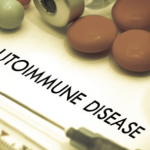While Minns Lowe and colleagues excluded trials in which electrical modalities were used as treatment adjuncts, recent evidence suggests that neuromuscular electrical stimulation (NMES) coupled with active quadriceps strength training may help address voluntary quadriceps activation failure and subsequent muscle weakness.7 Similar findings have been reported for optimizing gluteus medius weakness following THR.11 A Cochrane systematic review is underway to examine the evidence on postacute PT and exercise therapy on pain, function, and quality of life after primary THR.12 With seven trials accepted to date, it appears that mixed findings and clinical heterogeneity (timing, setting, intensity, duration, and outcomes) among the RCTs and quasi-RCTs will continue to contribute to the confusion around optimal exercise regimes after THR. Your patients can find additional information on joint replacement and exercise on the Internet. (See Table 2, p.17.)
Final Words
Consistent with the recommendations given by Marian Minor, PhD, PT, in the May 2008 issue of The Rheumatologist (“Exercise to Improve Outcomes in Knee Osteoarthritis,” p. 1), it is important to promote exercise during the office visit by encouraging participation in community-based pool or land programs and identifying those individuals who require additional guidance from a PT to address specific neuromuscular and functional impairments in both the preoperative and postoperative phase. Empowering patients to take an active role in their planning for surgery and post-op rehabilitation will help to prepare them both physically and mentally and ensure they get the most out of their new joint.
Westby is a PhD candidate and physical therapy teaching supervisor at Mary Pack Arthritis Program at Vancouver Coastal Health, Vancouver, BC, Canada.
References
- Westby MD, Backman C. Health professionals’ and patients’ perspectives on rehabilitation and outcomes following total hip and knee arthroplasty: A focus group study. CARE V Meeting, Oslo, Norway, April 25, 2008.
- Kim S. Changes in surgical loads and economic burden of hip and knee replacements in the US: 1997-2004. Arthritis Rheum. 2008; 59(4):481-488.
- Lavernia CJ, D’Apuzzo MR, Hernandez VH, et al. Postdischarge costs in arthroplasty surgery. J Arthroplasty. 2006; 21(6); Suppl 2:144-150.
- Ackerman IN, Bennell KL. Does pre-operative physiotherapy improve outcomes from lower limb joint replacement surgery? A systematic review. Australian J Physiotherapy. 2004; 50:25-30.
- Coudeyre E, Jardin C, Givron P, et al. Could preoperative rehabilitation modify postoperative outcomes after total hip and knee arthroplasty? Elaboration of French clinical practice guidelines. Annales de Réadaptation et de Médecine Physique. 2007; doi:10.1016/j.annrmp. 2007.02.002
- Rooks DS, Huang J, Bierbaum BE, et al. Effect of preoperative exercise on measures of functional status in men and women undergoing total hip and knee arthroplasty. Arthritis Rheum. 2006; 55(5):700-708.
- Meier W, Mizner R, Marcus R, et al. Total knee arthroplasty: Muscle impairments, functional limitations, and recommended rehabilitation approaches. JOSPT. 2008; 38(5):246-256.
- Reardon K, Galea M, Dennett X, et al. Quadriceps muscle wasting persists 5 months after total hip arthroplasty for osteoarthritis of the hip: A pilot study. Internal Med J. 2001; 31:7-14.
- Brander VA, Stulberg SD. Rehabilitation after hip- and knee-joint replacement. Am J Phys Med Rehabil. 2006;85(11); Suppl: S98-S118.
- Minns Lowe CJ, Barker KL, Dewey M, Sackley CM. Effectiveness of physiotherapy exercise after knee arthroplasty for osteoarthritis: Systematic review and meta-analysis of randomized controlled trials. BMJ. 2007;335:812-820.
- Bhave A, Mont M, Tennis S, et al. Functional problems and treatment solutions after total hip knee joint arthroplasty. JBJS. 2005;87 Suppl 2:9-21.
- Westby MD, Kennedy D, Brander V, Carr S, Backman C, Bell M. Post-acute physiotherapy for primary total hip arthroplasty. (Protocol) Cochrane Database of Systematic Reviews. 2006, Issue 2. Art. No.:CD005957.


